Advocating to Secure Unprecedented Federal Resources (Cap-to-Cap 2024)
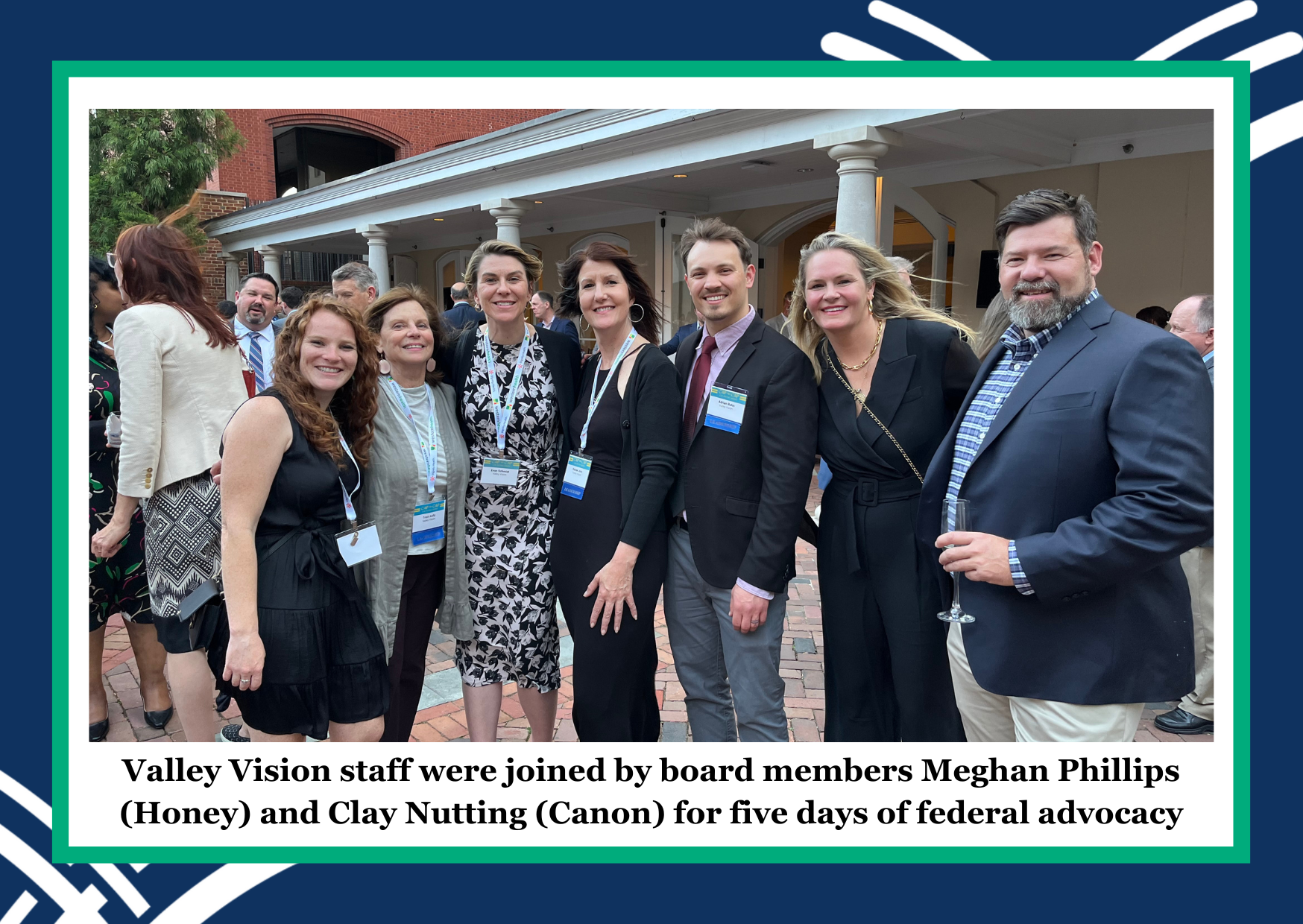
Right now is a critical time to engage with the federal government.
Once-in-a-generation resources are available for the “big play” investments that our region needs to grow and thrive. Valley Vision has a long history of participating in the Sacramento Metro Chamber’s Capitol-to-Capitol program, which serves as our region’s premier federal advocacy opportunity each year. This program provides opportunities to meet with the Sacramento Region’s federal legislators and encourages participants to meet with federal agencies, many of whom oversee competitive funding programs.
This year’s 52nd annual“Cap-to-Cap” was the largest on record, with 425 leaders participating. Valley Vision staff led and supported many of the topic-based teams and, in keeping with tradition, have documented their experiences below.
Clean Air & Climate by Adrian Rehn
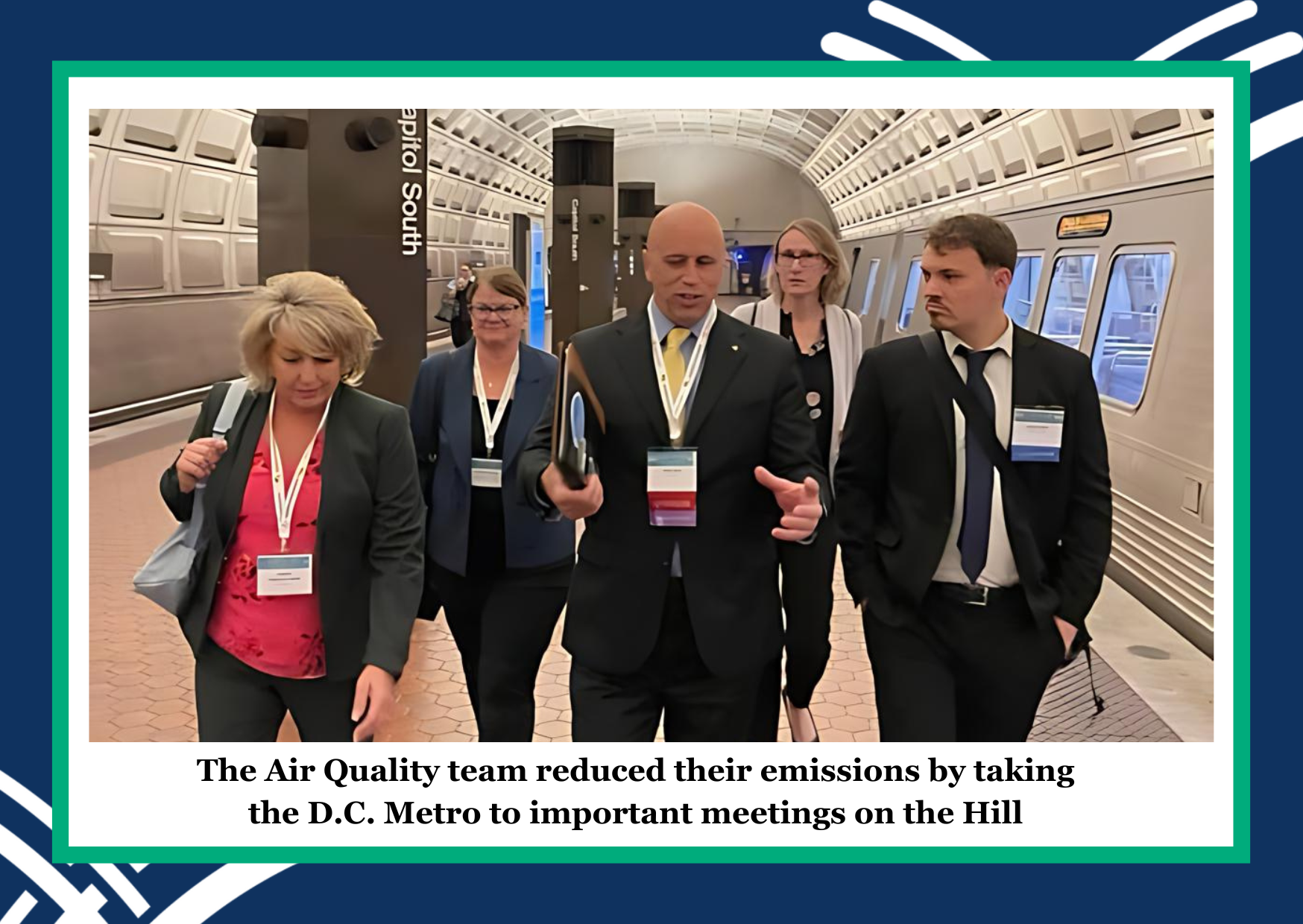
The Cleaner Air Partnership, which Valley Vision staffs, staffs two of the thirteen policy-focused “teams” focused on (1) air quality and (2) wildfire. This year, our teams elevated funding for a comprehensive suite of air quality strategies as part of the Climate Pollution Reduction Grant program, climate projects of regional significance, and technical but extremely important policy fixes like letting air districts “write off” smoke from preventative prescribed fire instead of getting dinged by U.S. EPA. We are in the process of following up on these important “Asks” and look forward to continued engagement throughout the year as we continue to work toward cleaner air for all.
Workforce Development & Education by Renee John
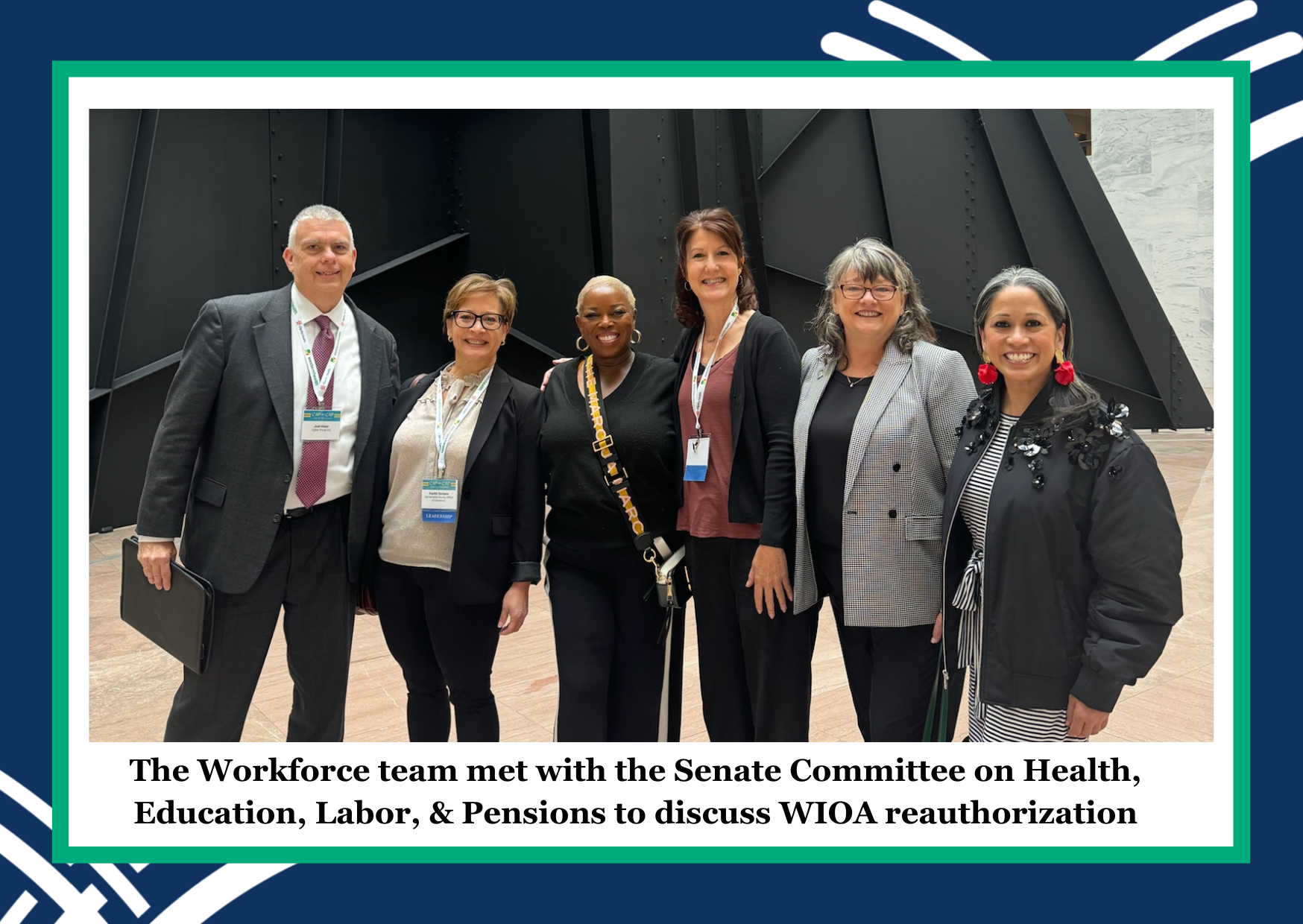
During my third in-person year at Cap to Cap, I co-led the team representing workforce and education. Our team advocated for the reauthorization and modernization of key acts including WIOA, the National Apprenticeship Act (NAA) and the Preparing and Resourcing Our Students and Teachers Act (PROSPECT), as well as expansion of Pell Grant eligibility and Perkins grant funds for vocational and technical education. Our team was co-led by Xanthi Soriano from SCOE and Ejiro Okoro from United Way California Capital Region, and included over 40 individuals from workforce and education institutions including preK-12, higher education, nonprofits, and elected officials.
This year, as in prior years, myself and team members had the opportunity to speak with folks shaping legislation that governs our ability to invest effectively in upskilling our region’s workforce. WIOA has been passed out of the House of Representatives and is currently in the Senate for markup. The Senate HELP Committee is currently creating its own version of the bill. While workforce legislation is generally bipartisan, different opinions on key provisions are common. Our goal was to share stories from the field to illustrate how vital federal funding is to our workforce and education efforts, highlight the key investments California is making, and encourage the federal government to work with haste to streamline and invest effectively in initiatives to ensure our businesses have the talent they need with the ability to pay living wages.
Impacting federal legislation can seem far removed from the daily work we all do. However, my experience has been that folks in Washington D.C. are interested to hear what is working well and what could be improved from partners implementing programs in their cities and regions.
Economic Development by Evan Schmidt
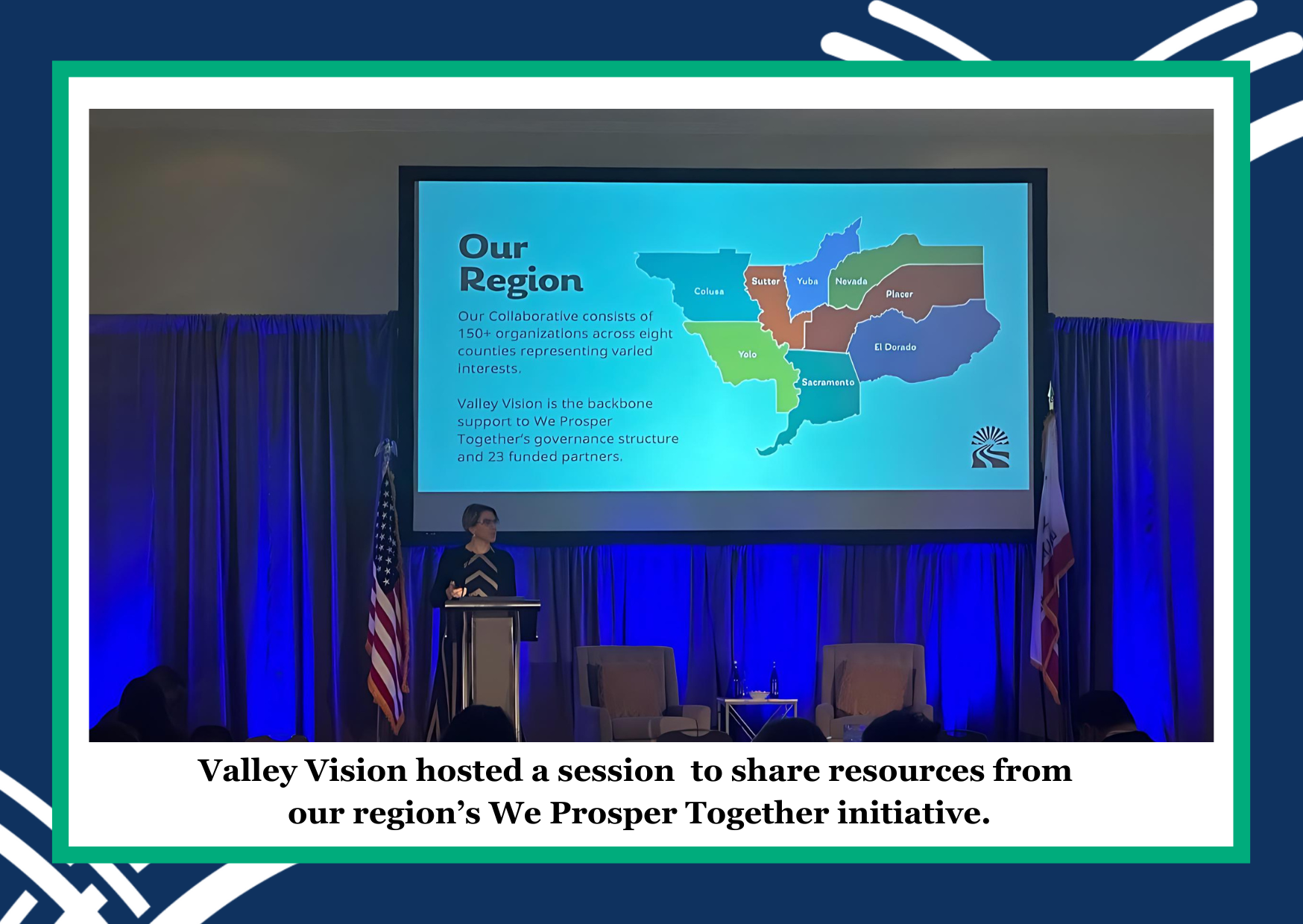
The Economic Development team took the opportunity at Cap-to-Cap to share and advocate for our key regional economic growth priorities and drew connections from the California Jobs First (formerly CERF) regional We Prosper Together initiative. Investing in and advancing the California Mobility Center and clean mobility innovations; advancing job creation and infrastructure around precision manufacturing; supporting our agricultural and life sciences assets including Aggie Square and ag innovation coming out of UC Davis and beyond; and supporting the supply chain and economic activity surrounding our region’s working lands were key priorities carried by the team.
We were able to meet with our regional representatives as well as key federal contacts at the National Science Foundation, Economic Development Administration, Small Business Administration, and US Department of Commerce, CHIPS for America. These meetings create opportunities for our region to identify investment opportunities with key federal contacts, communicate our region’s value proposition and needs, and build cohesion among regional stakeholders.
Valley Vision was also pleased to host a session for all delegates with our partners at the Brookings Institution to share data resources that have been compiled and analyzed for our region in the last nine months as part of the We Prosper Together initiative. Brookings researchers reinforced the importance of our key industry sectors and shared analytics about our region’s economic and innovation landscape. Explore the data and read the Executive Summary here.
Food and Agriculture by Grace Kaufman
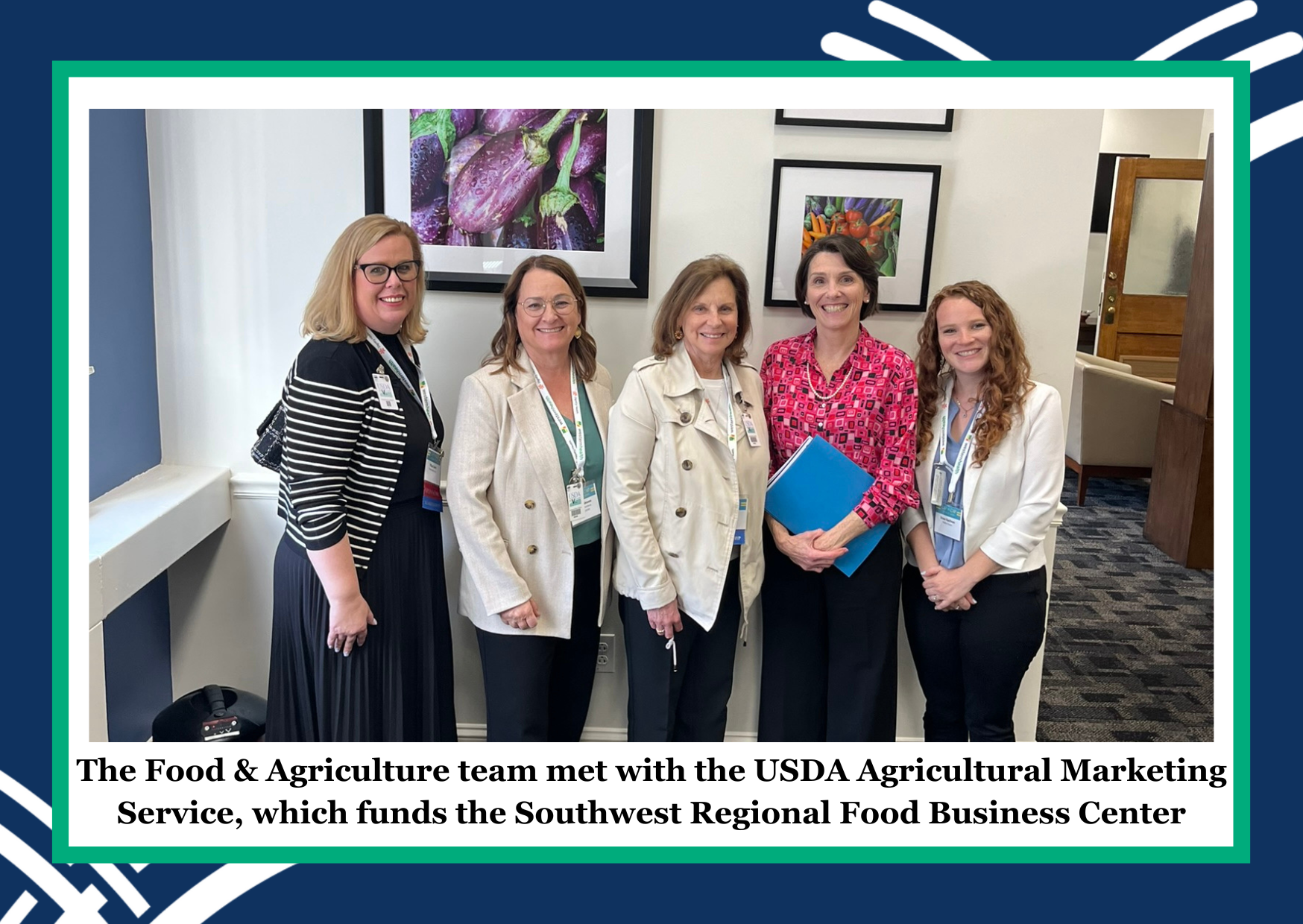
How can we leverage funding across multiple departments in USDA to provide more resources for infrastructure that supports small and mid-size food businesses? How can we improve food and nutrition insecurity while also supporting the region’s local farms and restaurants? Those were some of the questions the food and agriculture team asked our representatives and federal agencies during the 2024 Cap-to-Cap program.
The food and agriculture team met with staff from three separate USDA departments. These meetings helped the team better understand and connect USDA opportunities to support the Sacramento Region’s food and farm businesses. This was particularly helpful for Valley Vision, as we support coordination and communication for the new USDA Southwest Regional Food Business Center, one of a network of 12 Centers across the country that provides resources and technical assistance to underinvested farmers and food producers.
This year was my second year attending the program, and I look forward to attending next year to advocate for the Sacramento Region and the Southwest Regional Food Business Center. In the meantime, Valley Vision will continue to work with partners to build a food and agriculture system that is resilient, innovative, sustainable, and equitable.
Food and Agriculture and Economic Development by Trish Kelly
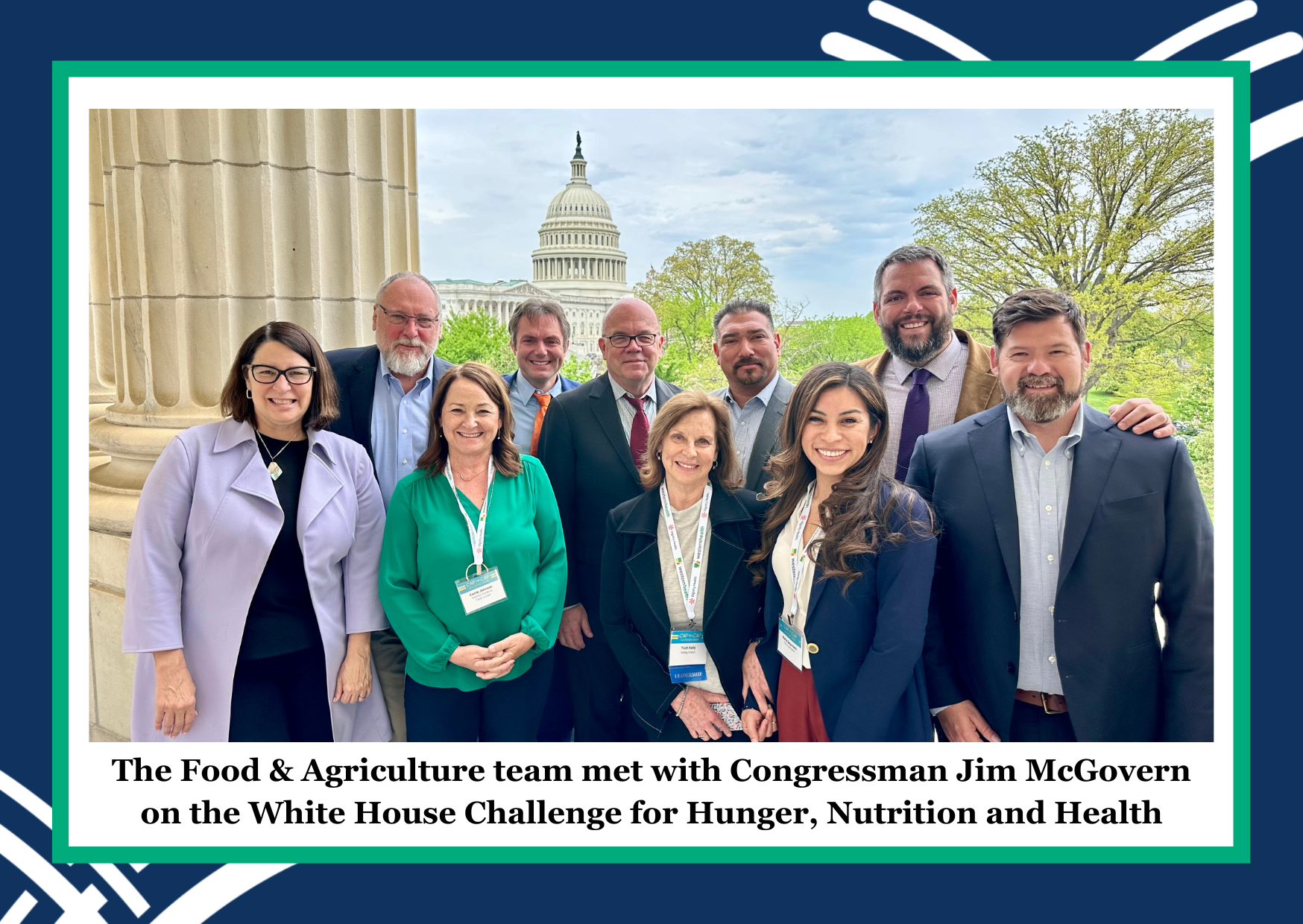
I co-lead the Food and Agriculture team and support the Economic Development team. Our priorities centered on the passage of the 2023 Farm Bill as well as overall food system resiliency. These two areas encompass such important issues as hunger and nutrition security, food is medicine, agricultural viability, institutional procurement (farm to school and farm to hospital), broadband connectivity, and food economy projects. The region is well positioned as an innovation leader in all these areas and we focus on telling our story and raising awareness of the region nationally, as well as on specific asks, such as removing barriers to healthy food access and fully funding the Farm Bill (which is passed every 5 years, but has been rolled over to 2024).
Our team includes a great cross-section of our food and agriculture ecosystem – nonprofits including food banks, farmers, local governments including elected officials (mayors, council members and supervisors), chefs both from restaurants and UC Davis Health, UC Davis main campus, University of California Agriculture and Natural Resources (UC ANR), and businesses.
This is my tenth year participating in Cap-to-Cap and I have seen its strength and impact grow over this time. We’re really built this team from a small and mighty core to a diverse and energized group of leaders, backed up by supporters at home. I look forward to this trip every year as the opportunity to meet with staff and leaders in Congress, including not only our delegation but the staff at key food and ag committees, at the federal agencies, and with organizations such as the American Farm Bureau Federation, national food policy and advocacy organizations and the Brookings Institution.
Two key highlights for me were meetings with Kelliann Blazek, the White House Agriculture and Rural Policy Advisor, and Congressman Jim McGovern, on the White House Challenge for Hunger, Nutrition and Health, and food is medicine legislation. They are inspiring leaders working to end hunger and improve health. But overall, our meetings with our local congressional leaders, USDA, EDA and SBA (the latter two through economic development) were so valuable in learning about new resources, better understanding the opportunities and challenges of the current legislative term, and gaining support for the region.
We’re proud to be part of the largest delegation that comes to DC on a community-focused mission. Since our trip, we have already had a follow-up on a few key priorities, and we feel our team has returned strengthened and committed to carrying the good work forward for the region. We appreciate the opportunity through Cap-to-Cap to engage with local leaders and champions in DC, which carries over into our work at home. We encourage anyone who wants to engage in these issues to stay in touch!
Sacramento Region Awarded $5 Million for Inclusive Economic Planning
Sacramento, CA – October 21, 2022: The Sacramento Region scored a significant win via an award of $5 million dollars in planning money from the Community Economic Resilience Fund (“CERF”) program.
The program – developed and led by the Employment Development Department (EDD), the Governor’s Office of Business and Economic Development (Go-Biz), and the Governor’s Office of Planning and Research (OPR) – advances regional economic recovery and resilience strategies that prioritize the creation of accessible, high-quality jobs in sustainable industries.
“This is a once-in-a-generation opportunity to advance our region’s economic recovery and resilience, and will demonstrate the collective value and impact our region has when we work together,” said Valley Vision CEO Evan Schmidt in a statement.
Planning dollars will be used to stand up a High Road Transition Collaborative (“Collaborative”) – a planning group that consists of balanced and meaningful representation from throughout the region – and a regional economic development plan.
In a months-long grant application process, Valley Vision convened multiple open-to-all webinars, workshops, subregional roundtables, and activity-based committees to inform our region’s application. In particular, the Prosperity Partnership, the Tahoe Prosperity Center, the Sierra Business Council, Yuba-Sutter Economic Development Corporation, the Nevada County Economic Resource Council, and the counties of Colusa and Yuba were instrumental in bringing regional stakeholders and community partners to the table.
As the designated Regional Convenor and Fiscal Agent for the Sacramento Region – which includes Colusa, El Dorado, Nevada, Placer, Sacramento, Sutter, Yolo and Yuba counties – Valley Vision is charged with standing up a planning process that engages meaningfully across subregions, sectors, and communities, to advance the goals of the CERF program.
“This announcement signifies a major step forward in economic development, as regional coalitions have come together across California ready to roll up their sleeves and build regional economic development strategies that will create more inclusive and vibrant economies built on a foundation of equity,” said Dee Dee Myers, Senior Advisor to Governor Newsom and Director of the Governor’s Office of Business & Economic Development. You can read the state’s CERF press release here.
A Sacramento Region virtual kick-off event will be held in early 2023. To stay up to date, subscribe to Valley Vision’s Sacramento Region CERF newsletter.
###
About Valley Vision
For 27 years, Valley Vision has served as a trusted nonprofit civic leadership organization in the region, bringing communities together to tackle our region’s challenges and ensure a more livable future and creating common ground built on facts through trusted research and meaningful coalition-building.
Driven by a “triple bottom line” approach of co-equally advancing social equity, economic prosperity, and environmental sustainability, Valley Vision has a proven record in bringing diverse groups together to develop long-term solutions to the region’s greatest problems. This history of civic leadership and engagement runs across local, regional, and statewide platforms, and across sectors and disciplines. To learn more about Valley Vision’s CERF work, visit www.valleyvision.org/projects/community-economic-resilience-fund.
Media Contact:
Priya Kumar
(707) 386-8501
priya.kumar@valleyvision.org
The Prosperity Partnership Helps Secure Millions for Inclusive Economic Impact for Greater Sacramento Region
Online webinars to be held starting November 18 for more information on access to funding.
SACRAMENTO, Calif. (November 3, 2021) – The Greater Sacramento region successfully scored two very significant wins via state of California legislative bills that will amount to millions in investment for inclusive economic development including: up to $38 million in funding for Green Means Go; and passage of the $600 million Community Economic Resilience Fund (CERF). Both of these victories were bolstered by the collective advocacy and leadership of The Prosperity Partnership which includes: Greater Sacramento Economic Council, Sacramento Asian Pacific Chamber of Commerce, Sacramento Metropolitan Chamber of Commerce, Sacramento Area Council of Governments (SACOG) and Valley Vision.
“These two victories at the state-level are critical towards the Greater Sacramento region’s recovery and economic resilience, as they not only deliver on real-time investment for jobs, business and infrastructure, but also demonstrate the collective value and impact we have when we work together,” stated The Prosperity Partnership in a joint statement.
Green Means Go is a multi-year pilot that implements the region’s Sustainable Communities Strategy. The pilot aims to lower greenhouse gas emissions and be a catalyst for economic development in the six-county Sacramento region by accelerating infill development. Green Means Go is led and implemented by SACOG, which recently was awarded over $38 million from the state to fund this one-of-a-kind state program. The funds will be critical to accelerate development within existing communities and reduce barriers to building more housing, increasing mobility options and accelerating EV deployment. Outreach and technical assistance will begin in January 2022 for funding requests with all funds to be used by June 30, 2026.
CERF is designed to build a more robust, sustainable, and equitable recovery across all sectors of California’s economy by supporting regional collaboratives in the planning and implementation of inclusive economic strategies towards both recovery and long-term resilience. CERF is funded by a $600 million one-time federal American Rescue Plan Act allocation. Developed in alignment with priorities identified through California Forward’s Roadmap to Shared Prosperity and supported with direct advocacy of The Prosperity Partnership, it will advance pivotal, place-based initiatives and high-road partnerships that reach into under-resourced neighborhoods, regional networks and rural communities; many of which are identified in the core strategies in the work by the partnership through Our Path Forward: The Prosperity Strategy.
An informational session on CERF and funding for organizations and local jurisdictions in Colusa, El Dorado, Placer, Sacramento, Sutter, Yolo and Yuba counties will be held virtually on Thursday, November 18 from 1:00 – 2:00 PM PT. For more information and to register, please visit valleyvision.org to register.
About Our Path Forward and The Prosperity Partnership
Our Path Forward: The Prosperity Strategy is a strategic framework and action plan for the six-county Greater Sacramento region that prioritizes the region’s core economic initiatives for a more prosperous, equitable and resilient economy. The framework was released in May 2020 as both an economic strategy as well as recovery plan. The framework parallels the goals and strategies of the region’s Comprehensive Economic Development Strategy (CEDS) and includes initiatives over the next five years that focus on a cluster-based economy, infrastructure investments and developing a sector-based workforce.
The Prosperity Strategy is the collective work of five regional organizations known as The Prosperity Partnership including Greater Sacramento Economic Council, Sacramento Asian Pacific Chamber of Commerce, Sacramento Metropolitan Chamber of Commerce, Sacramento Area Council of Governments and Valley Vision.
For updates and to learn more visit theprosperitystrategy.org.
Press Contact:
Traci Rockefeller Cusack at 916-213-4373
traci@trockcommunications.com